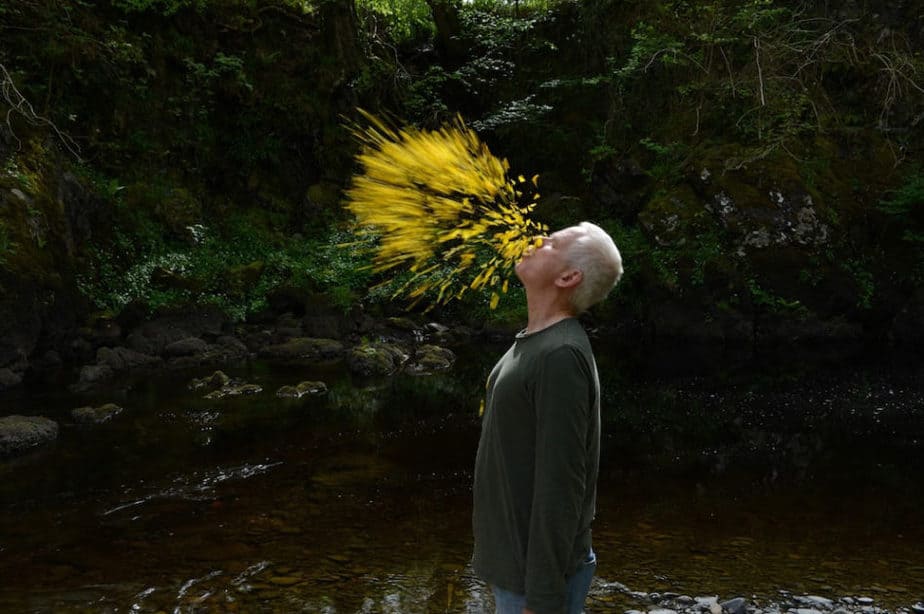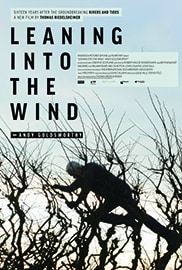 There are more than a few ways to go about making a documentary about an artist. There’s the dead artist documentary, the living artist documentary and what he (and maybe every once in a while, she) has done thus far with his life—either pre-success or post and then there’s the slice-of-life look. The beauty of the latter is that context is rendered secondary to process, and for an artist like Andy Goldsworthy, art is all about the experience of nature and the process of the experience of the creation and often the destruction of the ephemeral. Leaning into the Wind is the second film that Goldsworthy and director Thomas Riedelsheimer have made together and there’s an ease between the filmmaker and the subject that makes the audience feel like a participant. In the Presidio, mixing hair clippings with clay to simulate the mud floor that that Goldsworthy had learned to make in Brazil for an installation, we practically feel what it is like to have the clay suck the moisture from our own hands, to subsequently cover the felled tree that Goldsworthy suspended in the room and through time-lapse photography we experience the cracking of the clay as it goes from smooth perfection to decay and decomposition.
There are more than a few ways to go about making a documentary about an artist. There’s the dead artist documentary, the living artist documentary and what he (and maybe every once in a while, she) has done thus far with his life—either pre-success or post and then there’s the slice-of-life look. The beauty of the latter is that context is rendered secondary to process, and for an artist like Andy Goldsworthy, art is all about the experience of nature and the process of the experience of the creation and often the destruction of the ephemeral. Leaning into the Wind is the second film that Goldsworthy and director Thomas Riedelsheimer have made together and there’s an ease between the filmmaker and the subject that makes the audience feel like a participant. In the Presidio, mixing hair clippings with clay to simulate the mud floor that that Goldsworthy had learned to make in Brazil for an installation, we practically feel what it is like to have the clay suck the moisture from our own hands, to subsequently cover the felled tree that Goldsworthy suspended in the room and through time-lapse photography we experience the cracking of the clay as it goes from smooth perfection to decay and decomposition.
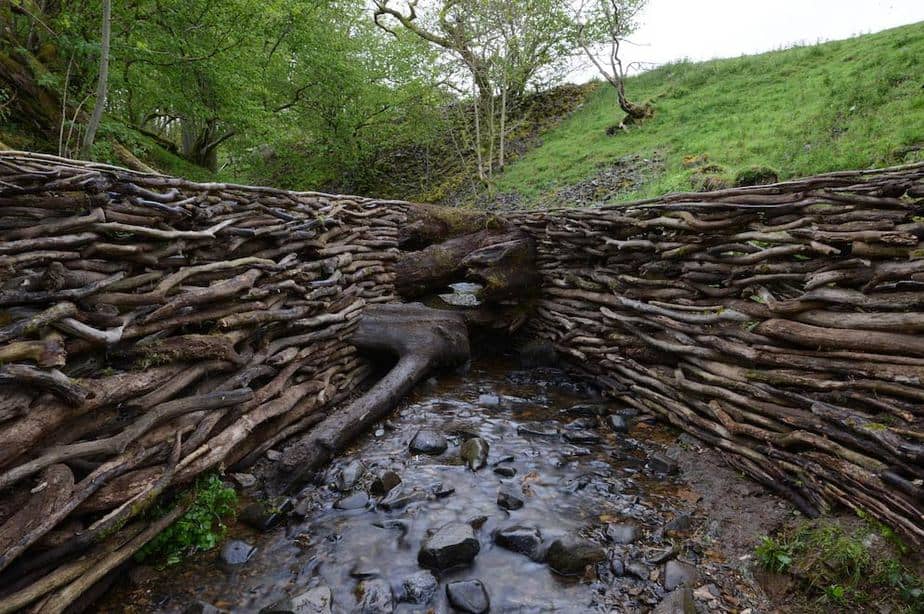
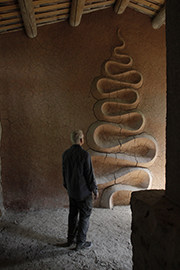
Andy Goldsworthy in LEANING INTO THE WIND, a Magnolia Pictures release. Photo courtesy of Magnolia Pictures. Photo Credit: © Thomas Riedelsheime, all rights reserved.
It isn’t that Goldsworthy rejects the modern, it is how he views the natural world. He sees art in nature, enhances it sometimes only for a moment by leaving a Peter Pan-like shadow of himself on the ground after a rainstorm, perhaps for someone to discover, or not. The entire gorgeous film is about what we see when we bother to look. Goldsworthy looks where most humans don’t—in hedges, and logs, and in explosions of flower petals. He says that to succeed one has to be able to fall, which he does while leaning into the wind with really, nothing to protect him but the years of experience of knowing that when he falls, he can always get back up.
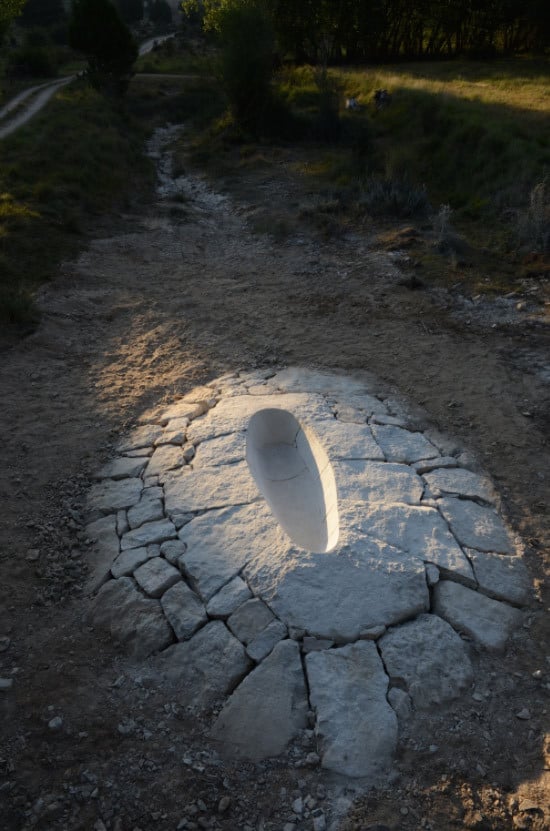
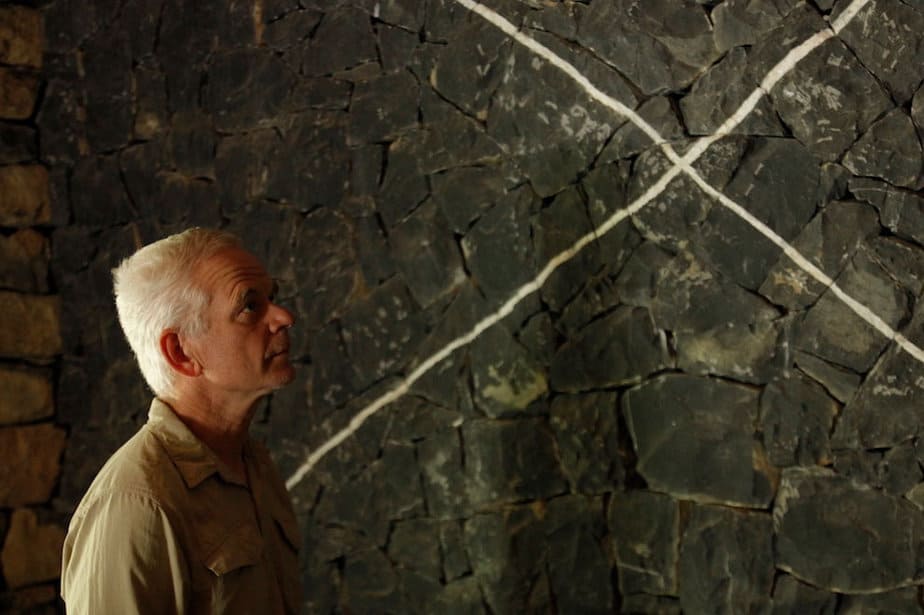
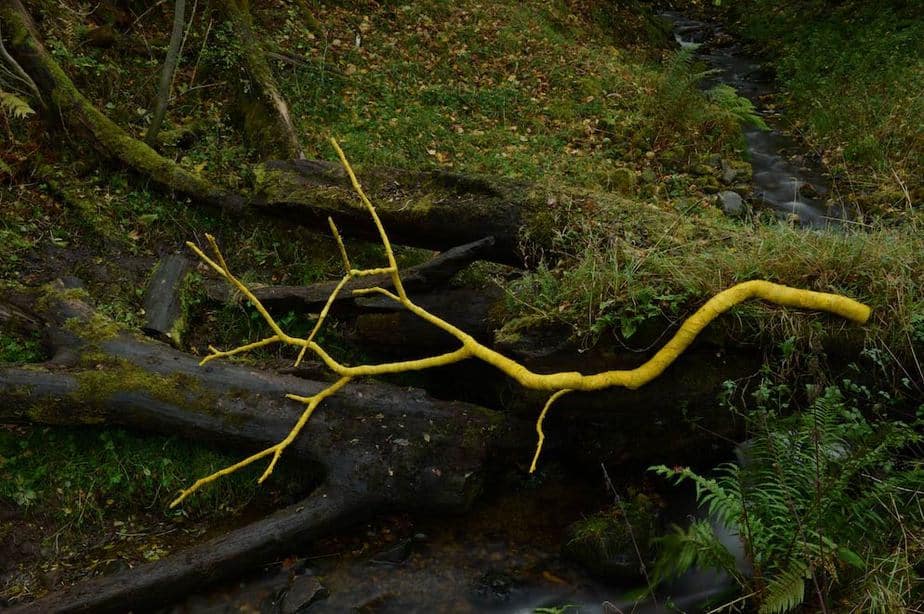
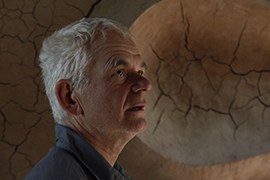

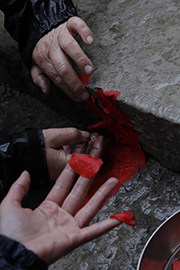
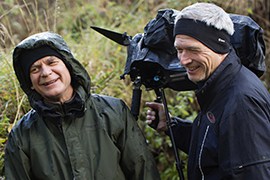
One has the sense that Riedelsheimer, himself tried to make a film using the same perspective Goldsworthy uses when working on an installation, with stimuli and serendipity directing the creative impulse, until an inexplicable conclusion arrives.
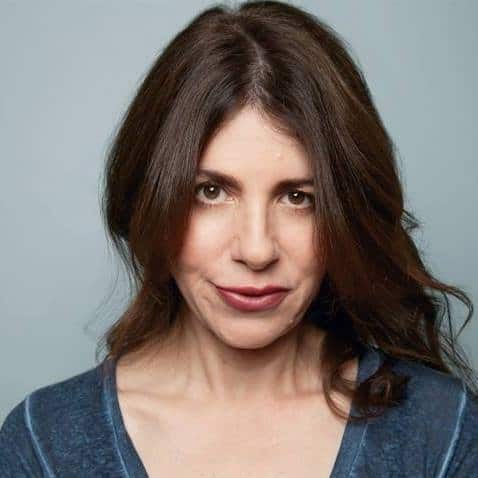
Jennifer Parker is a Manhattan-based writer and mother. The editor in chief of StatoRec, Jennifer’s film criticism and author profiles have appeared in At Large Magazine, Fjords Review and the Los Angeles Review of Books.

